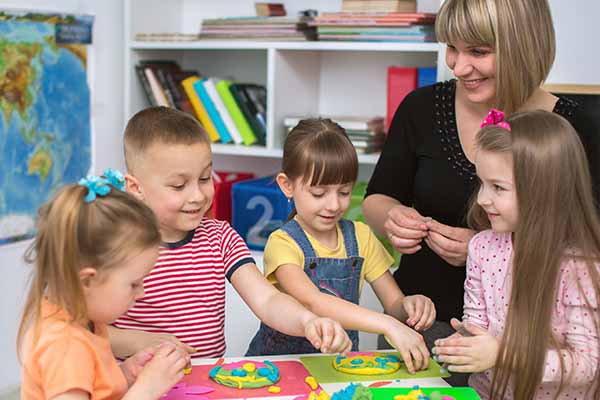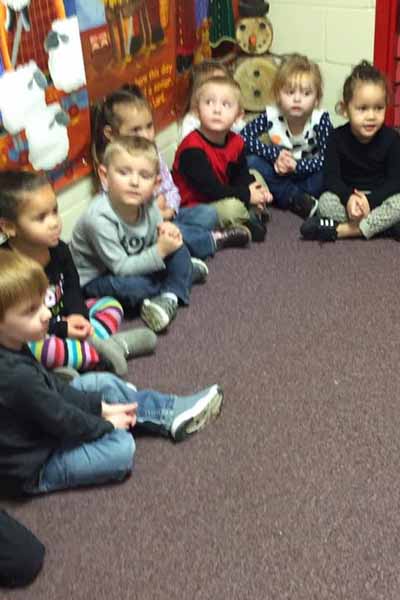Preschool 3’s
Children in our program transition to the first preschool class when they are about 3 years of age. Preschool classes are a little more structured though their work continues to be done through play. At this age they are able to do more things in small groups and enjoy sitting as a class for a story or experiment. However, a large amount of their preschool days will continue to have new concepts taught one-on-one with the teacher or in a small group with two or three other children. The preschool curriculum focuses on the following areas:
Social-Emotional development
Preschoolers are now able to look at situations and delay gratification. For example, if the block area is full, they will look to see what other areas are available. Our teachers help the children learn and follow classroom rules, routines and transitions with occasional reminders from the teacher. Preschoolers are able to take care of their own needs and wants with confidence. They enjoy their independence in washing and drying their own hands, taking clothes off and on, and helping with classroom jobs (put away toys, feeding the fish, using materials such as utensils and brushes appropriately). Our teachers help children act out common everyday situations so that they can model concern about the feelings of others. Acting out these situations helps the children practice appropriate ways of responding to a given situation.
Physical development
Preschoolers’ gross motor skills are more refined than those of toddlers. They can move purposefully from place to place with control such as avoiding people and obstacles when running. We spend time outside as often as the weather allows so that our preschoolers get practice using these gross motor skills. At this age, preschoolers will climb stairs and playground equipment using alternating feet. They love to jump off low steps and over small objects. Throwing, catching and kicking a ball by running up to it are skills that they can now manage. Activities are planned to develop preschoolers fine motor skills as well. Preschoolers begin using scissors for snipping paper and enjoy making crafts or their own creative works of art. Children are taught how to hold a drawing or writing tool with a three-point finger grip. Teachers also help them begin to independently button, zip, buckle and lace their own clothes.
Language development
A preschooler’s ability to use and understand language is increasingly complex. They are able to follow two or more step directions. Their expressive vocabulary is expanding and the tell elaborate stories. Preschoolers’ use social rules of language such as carrying on a conversation with back-and-forth exchanges, taking turns speaking.
Cognitive development
Three-year-old’s’ attention span is lengthening as is their ability to sustain interest in a task. They will often practice an activity many times until they are successful. Preschoolers enjoy taking things apart. Our teachers design the environment to allow your child to do these things. They create engaging areas that fosters exploration and investigation. Our teachers’ “play” with and alongside children to expand the children’s thinking. Asking open-ended questions along the way provides opportunities to extend the child’s learning.
Literacy development
Preschoolers’ are beginning to show more interest and take notice of letters, words, sounds of letters, and printed material. They begin to isolate the sounds of letters within words. Our teachers use songs and rhymes to help children develop these skills. Books and story-time take place multiples times throughout the day. Fun chants focus childrens’ attention on phonics skills. Preschoolers begin recognizing their name in print. In fact, they learn to recognize the names of the other children in the room. Our teachers provide a print-rich environment that helps children develop an understanding of the relationship between a spoken and written word. Children learn that text or print is meaningful and can be read.
Mathematics development
Math is part of everyday life. Our teachers encourage children to count items, how many boys/girls are in attendance, the number of cups needed to set the table, etc. Children learn the concepts of ‘more’ and ‘less’ through simple activities. They begin to recognize and name a few numerals. Teachers use every ‘teachable moment’ to practice these math skills. Children will begin to follow simple directions related to proximity such as beside, between, and next to. They learn to recognize a few basic shapes.


